#preventative veterinary care
Explore tagged Tumblr posts
Text
5 Pillars of Holistic Dog Care: A Complete Guide
Discover the art of holistic dog care with our latest guide! Learn how to enrich your dog's life across nutrition, exercise, mental well-being, and more. Perfect for pet parents who want the best for their dogs. #HolisticDogCare #DogWellness #HealthyDogs
In the realm of dog parenting, the term “holistic” is not just a buzzword; it’s a commitment to caring for our canine companions in a way that addresses their needs comprehensively. Holistic dog care means considering all aspects of your pet’s health and happiness, from the food they eat to the exercise they get, and even their emotional well-being. Let’s embark on a journey through the five…
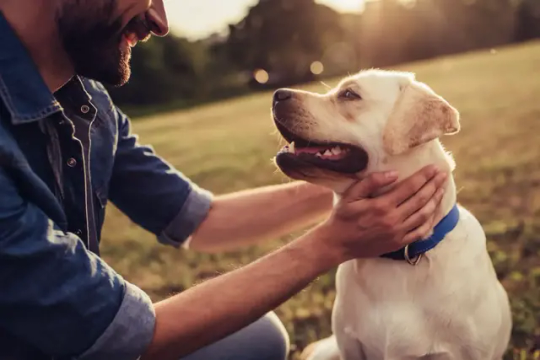
View On WordPress
#dog companionship and socialisation#dog nutrition#exercise and mental health#holistic wellness#preventative veterinary care
1 note
·
View note
Text
Me: *gives an entire large dog treat (in pieces) to a 2# puppy*
Doc: Heather! That is breakfast, lunch, AND dinner for her!
Me: *am an unrepentant puppy treater and give more*
Doc: *takes the treats and hands me the vaccines* I'm revoking your treat privileges. You get to poke her instead.
#C'mon I'm Italian-American I gotta feed things!#lol#veterinary#vet tech#dog#my coworkers#quotes#preventative care#puppy#LVT#licensed vet tech
530 notes
·
View notes
Text

Had to put this sweet old lady to sleep this afternoon... gonna miss her a whole lot :(
Those who've been following since ye olden tumblr days might remember these pics of us as lil tiny babies I took on digicam back in 2010 (a real pull from the archives)

If you've got a kitty cat please give it an extra big squeeze for me!!! If u need me I will be on the porch, chainsmoking and crying <3
#for clarification this is lettiecat/babycat NOT bananacat#(A Christmas Carol narrator voice) the bananacat... who did NOT die#wow does it suck to be too poor to afford preventative veterinary care!!!! im trying not to think abt how much euthanasia alone just cost us#also euthanasia housecalls are an incredible service wow#v envious it's not a service humans can access tbh i would like 2be administered IV ketamine/painkillers by a nice lady in my own bed 👀#anyways......i gotta go get high enough to pretend the bananacat will live forever#@ the pink brony club#lettiecat#butch bonnibel bubblegum
17 notes
·
View notes
Text
Veterinary Vaccine: Importance of Vaccines for Our Furry Friends
Veterinary Vaccines are Essential for Pets Vaccines play a crucial role in keeping our pets healthy. Just like humans, pets are susceptible to various infectious diseases that can make them severely ill and sometimes even lead to death. Vaccines help boost pets' immune system and provide protection against dangerous diseases. The most common and important vaccines recommended for dogs and cats include: Rabies Vaccine Rabies is a fatal viral disease that can infect both pets and humans. It is transmitted through the bite of an infected animal. According to experts, rabies vaccination is absolutely necessary to protect our furry friends from this threat. In many countries and regions, it is mandatory by law to vaccinate pets against rabies to prevent its spread in the community. Pets require an initial series of rabies vaccines starting at 3 months of age followed by regular booster shots as per the schedule recommended by veterinarians. This ensures lifelong protection against this fatal yet preventable disease. Core Vaccines for Dogs Dogs need a series of core vaccines early in their life and regular boosters to maintain protection. The core Veterinary Vaccines routinely recommended for dogs include: - Distemper: This viral disease can cause seizures, neurological issues and fatality in dogs if not vaccinated. Puppies require a series of distemper vaccines starting from 6-8 weeks of age with boosters every year. - Parvovirus: This highly contagious virus often leads to severe vomiting, diarrhea and even death in unvaccinated puppies. An initial series along with annual boosters are necessary to shield dogs from parvo. - Adenovirus: Also known as hepatitis, this infection can cause liver failure in dogs. Core vaccines effective in preventing adenovirus contain both types 1 and 2. - Parainfluenza: This respiratory virus can lead to pneumonia if not vaccinated against. It is included in combination vaccines for dogs. Core Vaccines for Cats Like dogs, cats also require a set of core vaccines for comprehensive protection. The most essential ones for felines include: - Panleukopenia: Also known as feline distemper, it can result in lethal gastrointestinal issues in cats if not vaccinated. Kittens need an initial series starting at 6-8 weeks with a booster at 1 year. - Calicivirus: Veterinary Vaccines highly contagious virus leads to flu-like symptoms and pneumonia in cats. Vaccination is done along with panleukopenia vaccine. - Rhinotracheitis virus: As the name suggests, it can cause upper respiratory infection in cats. Core feline vaccines contain this virus along with panleukopenia and calicivirus. Optional Vaccines In addition to the core ones, veterinarians may also recommend some non-core or optional vaccines depending upon the pet's lifestyle, risk of exposure and local disease situation. These include: For Dogs: - Leptospirosis: Spread through contact with infected urine, it can damage organs. Recommended only in high-risk areas. - Lyme disease: Transmitted through tick bites, it causes joint issues. Dogs in wooded/grassy areas may need this vaccine. For Cats: - Chlamydophila: Bacterial infection leading to conjunctivitis. Indoor cats at low risk do not always require this vaccine. - Rabies: Core for dogs but optional for indoor cats in low-rabies regions after discussing risks with vet.
Get more insights on Veterinary Vaccines
About Author:
Money Singh is a seasoned content writer with over four years of experience in the market research sector. Her expertise spans various industries, including food and beverages, biotechnology, chemical and materials, defense and aerospace, consumer goods, etc. (https://www.linkedin.com/in/money-singh-590844163)

#Veterinary Vaccines#Animal Health#Pet Vaccines#Livestock Immunization#Animal Disease Prevention#Veterinary Medicine#Animal Care#Veterinary Immunology
0 notes
Text
Recognizing Early Signs of Canine Distemper in Dogs
Canine Distemper is a serious and often fatal disease that affects dogs worldwide. Caused by the Canine Distemper Virus (CDV), this highly contagious disease can spread rapidly among unvaccinated dogs, leading to severe health complications. Recognizing the early signs of Canine Distemper Disease is crucial for ensuring prompt veterinary care and improving the chances of recovery.

What is Canine Distemper?
Canine Distemper is a viral disease that affects a dog’s respiratory, gastrointestinal, and nervous systems. The virus is primarily spread through airborne exposure (e.g., sneezing or coughing) and direct contact with infected animals or contaminated objects. Puppies and unvaccinated dogs are especially vulnerable to the disease.
Early Signs of Canine Distemper
Early detection of Canine Distemper can make a significant difference in the outcome for your dog. Here are some of the initial signs to watch for:
Fever: One of the first signs of Canine Distemper is a sudden onset of fever. This initial fever may be mild and go unnoticed, but it can return with greater intensity. Monitoring your dog’s temperature regularly can help detect this early sign.
Eye Discharge: Clear or watery discharge from the eyes is another common early symptom. This discharge can quickly become thick, yellow, and crusty as the disease progresses. Your dog’s eyes may also appear red and swollen.
Nasal Discharge: Similar to the eye discharge, dogs with Canine Distemper may develop a runny nose. This nasal discharge may start as clear but can become thick and pus-like, indicating an infection.
Coughing and Sneezing: The Canine Distemper Virus often affects the respiratory system, leading to coughing, sneezing, and difficulty breathing. These symptoms can be mistaken for kennel cough or other respiratory infections, so it’s important to seek veterinary advice if they persist.
Lethargy: Dogs in the early stages of Canine Distemper often exhibit signs of lethargy and depression. If your dog seems unusually tired, uninterested in activities, or is sleeping more than usual, it could be an early indication of the disease.
Loss of Appetite: A decrease in appetite or refusal to eat is a common early symptom. Dogs with Canine Distemper may also experience weight loss due to their reduced food intake.
Vomiting and Diarrhea: Gastrointestinal symptoms such as vomiting and diarrhea can occur in the early stages. These symptoms can lead to dehydration, so it’s important to ensure your dog stays hydrated and seek veterinary care promptly.
Hardening of Paw Pads and Nose: In some cases, dogs with Canine Distemper develop a condition known as hyperkeratosis, which causes the paw pads and nose to harden and thicken. This is a more advanced sign but can occur early in the disease’s progression.
What to Do if You Suspect Canine Distemper
If you notice any of these early signs of Canine Distemper in your dog, it is crucial to seek veterinary care immediately. Early intervention can make a significant difference in the prognosis and treatment outcomes. Tri-County Animal Hospital offers comprehensive diagnostic and treatment services to manage Canine Distemper Disease effectively.
Diagnosing Canine Distemper
Veterinarians diagnose Canine Distemper through a combination of clinical signs, medical history, and laboratory tests. Blood tests, polymerase chain reaction (PCR) tests, and antibody tests are commonly used to confirm the presence of the Canine Distemper Virus. Prompt and accurate diagnosis is essential for initiating appropriate treatment and care.
Preventing Canine Distemper
The best way to protect your dog from Canine Distemper is through vaccination. Puppies should receive their first distemper vaccine at six to eight weeks of age, followed by booster shots every three to four weeks until they are 16 weeks old. Adult dogs should receive regular booster shots as recommended by their veterinarian. Tri-County Animal Hospital can provide guidance on an appropriate vaccination schedule for your dog.
Conclusion
Recognizing the early signs of Canine Distemper in dogs is vital for ensuring timely and effective treatment. If you notice any symptoms such as fever, eye or nasal discharge, coughing, lethargy, loss of appetite, vomiting, diarrhea, or hardening of the paw pads and nose, seek veterinary care immediately. Early diagnosis and intervention, along with preventive measures like vaccination, are key to protecting your dog from this serious disease. For expert care and advice on Canine Distemper, contact Tri-County Animal Hospital today to schedule an appointment.
#Canine Distemper#Canine Distemper Virus#Canine Distemper Disease#Early Signs of Canine Distemper#Symptoms of Canine Distemper#Dog Health#Pet Health#Tri-County Animal Hospital#Dog Fever#Dog Respiratory Symptoms#Dog Gastrointestinal Issues#Dog Eye Discharge#Dog Lethargy#Dog Neurological Symptoms#Canine Distemper Prevention#Canine Distemper Treatment#Dog Vaccination#Veterinary Care#Pet Care#Canine Distemper Diagnosis
0 notes
Text
The Benefits of Holistic Pet Care: Enhancing Your Pet's Well-being Naturally
As pet owners, we all want the best for our furry friends. We're always looking for ways to ensure they live long, healthy, and happy lives. One approach that's gaining popularity is holistic healthcare for pets. At Cascade Summit Animal Hospital, we believe in providing comprehensive care that goes beyond traditional methods. Holistic pet care focuses on treating the whole pet, addressing physical, emotional, and environmental factors to enhance overall well-being.

What is Holistic Pet Care?
Holistic pet care is an approach that considers the entire pet when making health and wellness decisions. Unlike conventional veterinary care that often targets specific symptoms or diseases, holistic pet care looks at the root causes of health issues. It combines traditional veterinary practices with alternative therapies to create a balanced and comprehensive treatment plan.
Why Choose Holistic Veterinary Care?
Natural Remedies
Holistic pet care emphasizes the use of natural remedies and treatments. This includes herbal supplements, acupuncture, massage therapy, and homeopathy. These methods can help manage pain, reduce inflammation, and promote healing without relying solely on pharmaceuticals.
Balanced Nutrition
Diet plays a crucial role in holistic care for pets. At Cascade Summit Animal Hospital, we focus on providing balanced, species-appropriate nutrition. This means opting for high-quality, whole foods that support your pet's overall health. A well-balanced diet can improve digestion, boost the immune system, and enhance your pet's energy levels.
Preventive Care
Holistic veterinary care emphasizes preventive measures to keep pets healthy. Regular wellness exams, vaccinations, and dental care are essential, but holistic care goes a step further. It includes lifestyle recommendations, such as exercise routines, mental stimulation, and stress reduction techniques to prevent illnesses before they start.
Personalized Treatment Plans
Every pet is unique, and their care should reflect that. Holistic veterinary care takes into account your pet's individual needs, temperament, and environment. At Cascade Summit Animal Hospital, we tailor our treatment plans to each pet, ensuring they receive the specific care they need.
Benefits of Holistic Pet Care
Reduced Side Effects
Traditional medications can sometimes cause unwanted side effects. Holistic treatments, such as acupuncture and herbal supplements, often have fewer side effects and can be used to complement conventional therapies.
Improved Quality of Life
Holistic pet care focuses on the overall well-being of your pet. By addressing physical, emotional, and environmental factors, this approach can significantly improve your pet's quality of life. Pets receiving holistic care often show increased vitality, better mobility, and improved mental health.
Enhanced Immune System
A holistic approach strengthens your pet's immune system through proper nutrition, regular exercise, and natural supplements. A robust immune system can help prevent diseases and promote faster recovery from illnesses.
Stronger Bond
Holistic care involves spending quality time with your pet, understanding their needs, and addressing them. This can strengthen the bond between you and your pet, leading to a happier and more fulfilling relationship.
Integrating Holistic Care into Your Pet's Life
At Cascade Summit Animal Hospital, we believe in a balanced approach to pet care. Integrating holistic care into your pet's life doesn't mean abandoning traditional veterinary practices. Instead, it's about finding the right balance between conventional medicine and alternative therapies to provide the best possible care for your pet.
Start by discussing holistic options with your veterinarian. They can help you identify which treatments and lifestyle changes will benefit your pet the most. Whether it's incorporating acupuncture sessions for arthritis relief, adding herbal supplements to their diet, or establishing a regular exercise routine, small changes can make a big difference.
Conclusion
Holistic pet care offers a comprehensive and natural approach to enhancing your pet's well-being. By considering the whole pet and addressing physical, emotional, and environmental factors, holistic veterinary care can lead to a healthier, happier life for your furry friend. At Cascade Summit Animal Hospital, we're committed to providing the best of both worlds—traditional veterinary care and holistic treatments—to ensure your pet receives the highest quality care possible.
Give your pet the gift of holistic care and watch them thrive naturally. Contact Cascade Summit Animal Hospital today to learn more about our holistic veterinary services and how they can benefit your beloved pet.
#Holistic Pet Care#Holistic Veterinary Care#Holistic Care for Pets#Natural Pet Remedies#Pet Nutrition#Preventive Pet Care#Acupuncture for Pets#Herbal Supplements for Pets#Pet Wellness#Cascade Summit Animal Hospital#Pet Health and Wellness#Alternative Pet Therapies#Balanced Pet Diet#Natural Pet Healing#Comprehensive Pet Care
1 note
·
View note
Text
The Role of Pet Wellness Exams and Preventative Care
As pet owners, we cherish the joy, companionship, and unconditional love our furry friends bring into our lives. Just like humans, pets require regular medical check-ups to ensure they remain healthy and happy. Pet wellness exams and preventative care play a pivotal role in safeguarding your pet’s health, extending their lifespan, and enhancing their quality of life. At Perky Paws Pet Hospital, we emphasize the importance of these proactive measures to keep your beloved pets thriving.

Understanding Pet Wellness Exams
Pet wellness exams are comprehensive health assessments that veterinarians perform to evaluate the overall well-being of your pet. These exams typically involve a thorough physical check-up, vaccinations, dental examinations, and discussions about your pet’s diet, exercise, and behavior. The primary goal is to identify any potential health issues early and provide necessary interventions before they escalate into serious problems.
Components of a Pet Wellness Exam
Physical Examination
This is the cornerstone of a wellness exam. The veterinarian will examine your pet from nose to tail, checking for any abnormalities in the eyes, ears, skin, coat, and internal organs. They will listen to the heart and lungs, palpate the abdomen, and assess the musculoskeletal system.
Vaccinations
Keeping your pet’s vaccinations up-to-date is crucial in preventing contagious and potentially life-threatening diseases such as rabies, distemper, and parvovirus. During the wellness exam, the veterinarian will review your pet’s vaccination history and administer necessary vaccines.
Dental Check-Up
Oral health is a significant aspect of your pet’s overall health. Dental issues can lead to pain, infection, and systemic diseases. The veterinarian will examine your pet’s teeth and gums and may recommend a professional cleaning or other dental treatments.
Parasite Control
Parasites like fleas, ticks, and worms can cause various health problems for pets. During the exam, your veterinarian will discuss preventive measures and treatments to keep these parasites at bay.
Nutritional and Lifestyle Advice
Each pet has unique dietary and exercise needs. The wellness exam is an excellent opportunity to discuss your pet’s nutrition and lifestyle with the veterinarian, ensuring they receive a balanced diet and adequate physical activity.
The Importance of Pet Preventative Care
Preventative care involves measures taken to prevent diseases or detect them early when they are more manageable. At Perky Paws Pet Hospital, we believe that proactive care is essential for maintaining your pet’s health and longevity. Here’s why preventative care is so important:
Early Detection of Diseases
Many illnesses, including diabetes, kidney disease, and cancer, can be treated more effectively if caught early. Regular wellness exams and screenings help in identifying these conditions in their initial stages, increasing the chances of successful treatment.
Cost-Effective
Preventative care can save you money in the long run. Treating a disease in its advanced stages is often more expensive than managing it early on. Regular check-ups and vaccinations are a cost-effective way to avoid costly medical interventions later.
Enhanced Quality of Life
Preventative care ensures that your pet enjoys a higher quality of life. By addressing health issues promptly, you can prevent pain, discomfort, and suffering, allowing your pet to lead a happier and more active life.
Strengthening the Human-Animal Bond
Regular visits to the veterinarian help in building a stronger bond between you, your pet, and the veterinary team. This relationship fosters trust and makes future visits less stressful for your pet.
Why Choose Perky Paws Pet Hospital?
At Perky Paws Pet Hospital, we are dedicated to providing top-notch pet wellness exams and preventative care. Our team of experienced veterinarians and support staff are passionate about animal health and well-being. Here’s what sets us apart:
Comprehensive Services
We offer a wide range of services, including wellness exams, vaccinations, dental care, parasite prevention, and nutritional counseling. Our holistic approach ensures that all aspects of your pet’s health are covered.
State-of-the-Art Facility
Our hospital is equipped with the latest technology and diagnostic tools, allowing us to provide accurate and efficient care.
Personalized Care
We understand that each pet is unique. Our veterinarians take the time to get to know your pet and tailor our services to meet their specific needs.
Compassionate Team
Our team is not only skilled but also compassionate. We treat every pet as if they were our own, ensuring they receive the best possible care in a loving and supportive environment.
Conclusion
Investing in pet wellness exams and preventative care is one of the best things you can do for your furry friend. At Perky Paws Pet Hospital in McKinney, we are committed to helping your pet live a long, healthy, and happy life. Schedule a wellness exam today and take the first step towards a brighter future for your beloved pet. Your pet’s health and happiness are our top priorities!
#Pet Wellness Exams#Preventative Pet Care#Veterinary Checkups#Pet Health Maintenance#Routine Pet Exams
0 notes
Text
Discover the secrets of Psittacosis – the bird flu's mischievous cousin! Learn symptoms, treatment, and how it affects birds and humans.
#african grey parrot lifespan in captivity#african grey behavior#buying an african grey parrot#cute birds#african grey lifespan#african grey parrot care#african grey parrot buy#african grey parrot website#african grey#african grey parrot#african grey life#african grey website#animals susceptible to Chlamydia psittaci#Antibiotics#antibiotics for Chlamydia psittaci in birds#avian chlamydiosis#avian veterinarian#avian veterinary care#bird disease#bird flu#bird flu in birds#bird flu in humans#bird flu prevention#bird flu symptoms#bird flu transmission#bird flu treatment#bird lovers#bird watcher#birds#birds susceptible to Chlamydia psittaci
0 notes
Text
Website : https://www.oakbaypetclinic.ca/
Address : 1826 Oak Bay Avenue, Victoria, British Columbia V8R 1B9, Canada
Oak Bay Pet Clinic, established in 1951 and led by Dr. Eva Dudzic since 2001, offers comprehensive veterinary services in Victoria, BC. Specializing in a full range of pet care, including emergency services, surgeries, dental care, preventative care, and behavioral consultations, the clinic caters to dogs, cats, and exotic animals. Emphasizing the human-animal bond, the clinic provides geriatric, palliative care, and end-of-life services, ensuring a compassionate approach to pet wellness.
Facebook : https://www.facebook.com/oakbaypet/
Instagram : https://www.instagram.com/oakbaypc/
Glassdoor : https://www.glassdoor.com/Overview/Working-at-Oak-Bay-Pet-Clinic-EI_IE4450644.11,29.htm
Keywords: Veterinarian near me Emergency vet near me Animal hospital near me Veterinary clinic near me Victoria veterinary clinic Pet care near me Oak Bay Pet Clinic Exotic pet vet near me Veterinary services near me Emergency vet services Animal care services Animal hospital services Compassionate pet care Emergency animal care Holistic pet care Pet health services Preventive care for cats Preventive care for dogs Professional pet care Senior pet care Senior pet care near me Vaccination services Vaccination services near me Veterinary diagnostics Victoria veterinary services Animal clinic services Personalized pet care Pet medical care Pet vaccination services Urgent care for animals Urgent vet care Veterinary clinic services Veterinary dental care Animal hospital in Victoria Animal wellness care Dental care for pets Local veterinary services Pet wellness services Veterinarian care experienced pet care preventive care for exotics expert pet surgeries expert pet procedures oral health for pets wellness check ups for pets geriatric pet services oak bay pet clinic testimonials exotic pet specialists pet care expertise animal doctor services exotic pet veterinary care animal health expertise veterinary medicine care pet surgery options veterinary treatment options comprehensive veterinary services preventive health for pets experienced animal doctors emergency vet care solutions advanced veterinary treatments state of the art animal hospital cutting edge veterinary services dedicated pet care team pet care in british columbia local emergency vet services urgent vet care in victoria exotic pet care in british columbia pet care in victoria veterinarian in british columbia exotic pet specialists in victoria veterinary services in british columbia animal clinic in victoria british columbia pet wellness victoria pet surgery dental care for pets in british columbia emergency vet in oak bay exotic pet vet in british columbia compassionate pet care near me preventive care for pets near me expert pet surgeries near me dental care for pets near me oak bay pet clinic near me exotic pet specialists near me
#Veterinarian near me#Emergency vet near me#Animal hospital near me#Veterinary clinic near me#Victoria veterinary clinic#Pet care near me#Oak Bay Pet Clinic#Exotic pet vet near me#Veterinary services near me#Emergency vet services#Animal care services#Animal hospital services#Compassionate pet care#Emergency animal care#Holistic pet care#Pet health services#Preventive care for cats#Preventive care for dogs#Professional pet care#Senior pet care
1 note
·
View note
Text
Sweet Peas and Safety: Are They Poisonous to Kids or Pets?
Sweet peas, with their captivating beauty and delightful fragrance, are a popular choice for gardens and floral arrangements alike. As responsible pet owners and parents, it’s essential to consider the safety of our loved ones, including children and pets, when introducing new plants into our surroundings. In this blog post, we will explore whether sweet peas are poisonous to kids or pets and…

View On WordPress
#Child Health#Child Safety#Educational Resources#Emergency Response#Gardening Safety#Home Safety#Immediate Medical Attention#Medical Advice Disclaimer#Pet Health#Pet Safety#Plant Poisoning#Plant Safety#Poison Control#Poison Control Center#Poison Prevention#Poison Symptoms#Sweet Peas Toxicity#Toxic Plants#Veterinary Care
0 notes
Text
Animal Health Sector: Trends, Challenges, and Opportunities in 2023 and Beyond

View On WordPress
#animal health#digital health#disease prevention#global trends#innovation#livestock#London#One Health#pet care#regulatory environment#UK#veterinary medicine
0 notes
Text
So you want to write about horses.
Part 2 now out!
Or you're writing and horses show up. Or its a pre-industrial fantasy and your characters have to get somewhere. Or you have a faint idea of your MC's love interest showing up on a white stallion.
Whatever the cause, you're writing, and a horse appears. But you know nothing about horses. I can help.
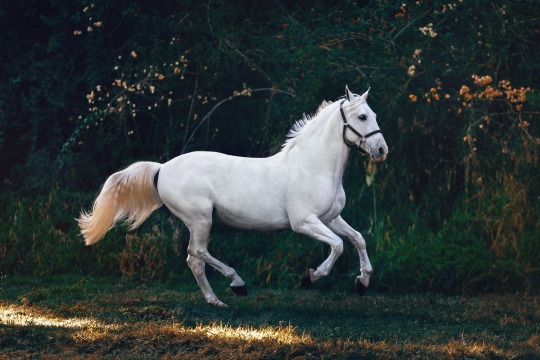
This is a horse. Horses come in many sizes.
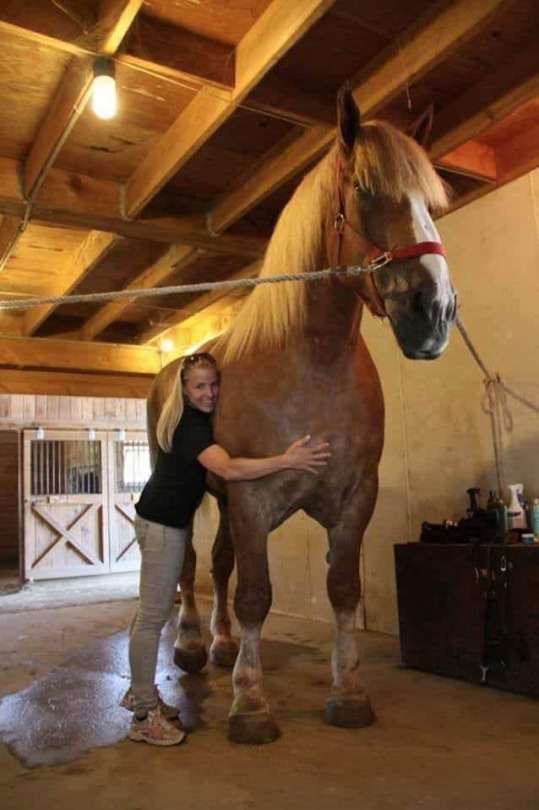
^ Big Jake, a Belgian Draft horse, and a roughly 5 foot woman for scale.
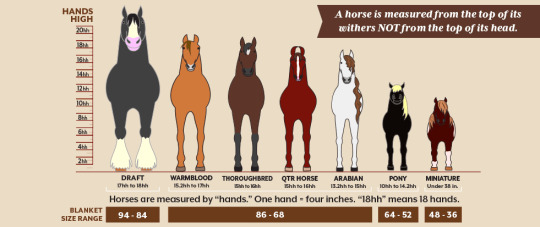
1 hand = 4 inches = 10.16 cm
Once a horse is smaller than about 14.2hh, it is generally considered a pony. In the modern day, ponies are not considered suitable for adult riders due to weight and height issues. Some pony breeds, such as Welsh, Fjords, ect. are known for being sturdy, and can more easily carry adult sized humans. Miniature horses should never be ridden by adults.

^The only suitable 'riding' a miniature horse should do
The above graphic mentions that horses are measured from the top of the withers, not the top of the head. But, what are withers?
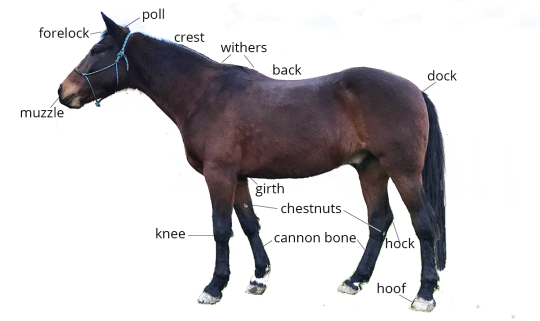
The withers are where the horse's shoulders meet the spine, and the neck becomes the back. Withers are incredibly important for saddle placement, as a badly placed saddle in this area can prevent a horse from moving its legs properly, cause a large amount of pain, and even damage a horse's spine. Speaking of spines, this is a horse skeleton, with the withers pointed out.
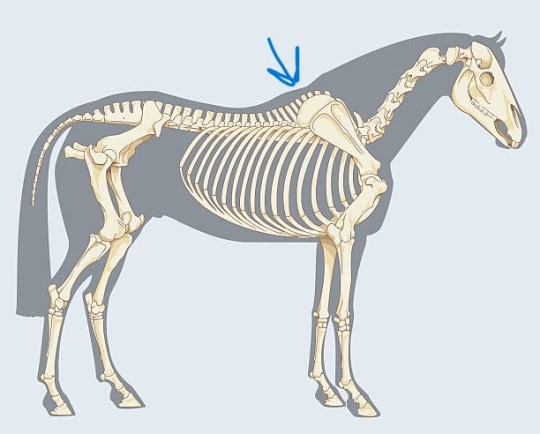
Horses have four legs. Horses cannot have any fewer than four legs. They are obligate quadrupeds. This is, in part, due to their weight, as well as the construction of their legs and hooves. This is to say, that while cats, dogs, and other animals can be amputees, a horse, short of some incredible magic solution, cannot. Even a broken leg bone will cause a huge amount of problems, as all of the weight that leg would usually hold must be shifted to the other feet, and this causes a condition called laminitis, where the tissue that holds together the hoof and the toe bone becomes inflamed, and begins to separate. Once this happens, the hoof tissue dies from lack of blood, and the bone begins to rotate. This is extremely painful for the horse, and so often the best solution for a horse with a broken leg is to be spared that pain. Famous American racehorse Barbaro experienced a complex broken bone, which began to heal fine, but complications from laminitis in two of his other legs caused him to be put down. This is why media will almost always show a horse with a broken or injured leg being 'taken care of'.

^Barbaro, in his prime. Even the best veterinary medicine couldn't save him.
Now, racehorses like Barbaro are moving at the fastest speed and the fastest gait of the horse, the gallop. The patterns that horses move their feet are referred to as gaits, with most horses having four, with some breeds having five or more.
The first gait and the slowest is the walk. In the walk, all four feet move independently, which leads it to be called a four-beat gait, as the footfalls make a sort of drumbeat on the ground.

The next gait is the trot, a two beat gait with diagonal pairs of legs moving together.
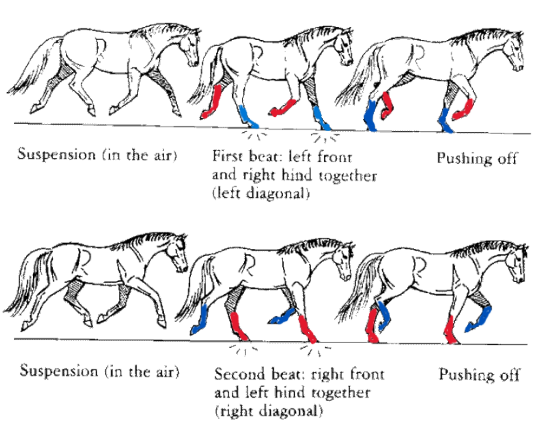
^Diagonal pairs marked in red and blue
The trot is a very bouncy experience for the rider, and can be uncomfortable. Some riders will rise and fall with a pair of diagonal legs, called a posting trot, some will stand in their stirrups, called a two-point or jump position, and some will sit the trot, which requires a lot of core strength (seriously, if you want a strong core, screw the gym)
The third gait is the canter, a three-beat gait with a single diagonal pair. This gait is ridden sitting, and feels a lot like going over waves on a jetski. There is a rise, a scoop, and a fall feeling. The canter is also called a lope in Western riding, they are the same gait.

^diagonal pair marked in red
A gallop is sometimes considered a variation on canter, as it is similar save for the legs actually moving in a four-beat pattern. As you can see with the image of Barbaro, all four of his feet are moving in different patterns, at different times, even though the gallop is really a four beat version of the canter. Riders in the gallop rise off the horse's back into a raised position, which allows the horse to use the full length of its spine and musculature to get as much reach and speed as possible. It feels like riding on top of a train barreling down the tracks, at least until your horse takes an unexpected turn and the ground is suddenly the only thing you're riding.
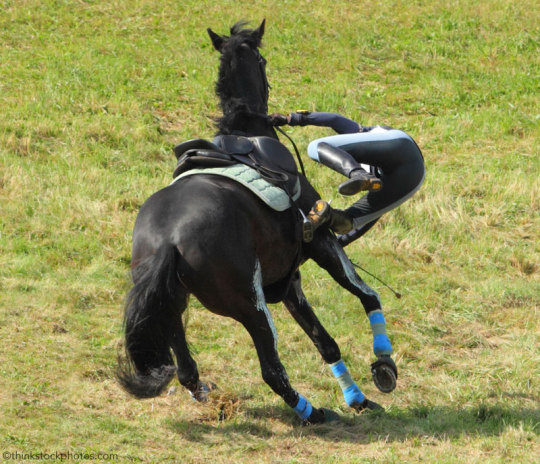
^ I've been there. The trick is to push away and hit the ground rolling, it hurts less that way. And don't land on your head.
That's all for this post. I'll have more when I feel like it, and send me questions if you want to know more about specific things or need a writing question answered
Reblogs welcome and encouraged
@jacqueswriteblrlibrary for wider reach
#writing#writing horses#writer advice#how to write#writing advice#writing help#writeblr#creative writing#writers on tumblr#writeblr community#writers#writerscommunity#horses#basic horse things
1K notes
·
View notes
Note
I appreciate you starting a conversation about the harms of homeopathy, and I just want to mention that homeopathy/alternative medicine is also largely BS when it comes to treating our pets. A lot of essential oils and herbal remedies are toxic to cats and dogs even in small quantities, but people still try using them as flea and tick prevention because they don’t want to use “toxic” medicine that actually works. CBD isn’t FDA approved for dogs because it’s not been proven to be effective and safe, but a lot of folks have pushed me to try it for my dog because he’s on medication for extreme anxiety. Some folks will seek out animal chiropractors to “treat” their dog’s IVDD or hip dysplasia instead of pursuing pain management or surgical treatment. People think that vets look at their pets and see dollar signs instead of an animal needing treatment and turn to snake oil salesmen instead. It’s maddening.
Yeah that makes me fucking crazy.
@drferox and @why-animals-do-the-thing are great resources on tumblr who have spent a ton of time discussing animal woo in the past; both have slowed down on posting because life is hard and tumblr is tumblr, but both have done a lot of excellent writing about things like animal training, raw pet food, vaccination, and how to be a good human to your pets. If you've got questions about animals, search their archives and you're probably going to find a ton of useful information.
Folks, I swear veterinarians aren't coming for your wallets and they are generally criminally under-compensated for the work that they do. They're brilliant professionals who are driven by passion and fucked by the market.
Sorry i went to go find some studies on dogs and cbd and i ended up finding a reprint of a small study from the american holistic veterinary medical association and I found this on the pdf and i'm going to murder somebody

for those who are not aware young living is an essential oil mlm largely targeting mormon housewives that was started by a man whose child died being drowned at birth in an at-home-water-birthing incident and who himself likely died of cancer he tried to treat with essential oils.
This is one of those things that's like a big flashing neon sign that the study/journal you're looking at is a hot pile of bullshit.
Anyway. Yeah. Research supporting the safety and effectiveness of CBD on dogs is pretty thin on the ground. Your pets depend on you. The choices you make determine their health and wellbeing.
Listening to woo-peddlers who tell you not to vaccinate, or who hype up untested "healthy grain free diets," or who promote and sell cbd in absence of evidence of its effectiveness is putting your pets hands in the health of someone who doesn't care about your pet, they just care about profit.
Also, while I'm here: don't feed your dog grain free foods unless they have a diagnosed allergy, grain free foods can lead to liver and kidney problems, dogs are more omnivorous, not obligate carnivores like cats and grain is not bad for their diet nor unnatural for them to eat, and there are very few brands that have done decades of feeding tests on dogs (Royal Canin, Hills Science Diet, Pedigree, Eukanuba, and Iams) and none of them are Blue Buffalo.
Appeals to nature are extremely common in online woo discussions of pet food and vet care. Your dog is not a wolf and does not need to eat like a wolf. Your cat is not a lion and does not need to claim territory like a lion.
Vaccinate your pets, don't let them wander, feed them tested diets, and listen to your vet's advice on their care.
238 notes
·
View notes
Text
Recognizing the Signs of Kidney Failure in Pets
Kidney failure is a serious condition that can affect pets, often catching owners by surprise. The kidneys play a crucial role in filtering waste from the blood and balancing fluids in the body. When they fail, it can lead to severe health issues. Understanding and recognizing the signs of kidney failure in pets is vital for early intervention and effective treatment. At Tri-County Animal Hospital, we are dedicated to providing the best care and information to ensure your pet's well-being.

Understanding Kidney Failure in Pets
What is Kidney Failure?
Kidney failure, or renal failure, occurs when the kidneys lose their ability to function properly. This condition can be acute (sudden onset) or chronic (developing over time). In both cases, it’s crucial to identify the problem early to manage it effectively.
Types of Kidney Failure: Acute vs. Chronic
Acute Kidney Failure: Often caused by toxins, infections, or severe dehydration, this type of kidney failure comes on suddenly and can be reversible with prompt treatment.
Chronic Kidney Failure: This is a progressive condition often associated with aging, underlying diseases, or genetic factors. It’s managed over time rather than cured.
Causes of Kidney Failure in Pets
Common Causes in Dogs and Cats
Several factors can lead to kidney failure in pets, including:
Toxins (e.g., antifreeze, certain medications)
Infections (e.g., leptospirosis)
Trauma to the kidneys
Chronic diseases (e.g., diabetes, high blood pressure)
Genetic Predispositions
Some breeds are more prone to kidney issues due to genetic factors. For instance, Persian cats and certain dog breeds like the Shih Tzu and Bull Terrier are more susceptible to kidney diseases.
Environmental Factors
Environmental toxins and poor diet can also contribute to kidney failure. Ensuring a clean, safe environment and a balanced diet is crucial for kidney health.
Early Signs of Kidney Failure
Recognizing the early signs of kidney failure can make a significant difference in the outcome for your pet.
Behavioral Changes
Increased thirst and urination
Decreased appetite
Lethargy or depression
Physical Symptoms to Watch For
Weight loss
Bad breath with a chemical odor
Vomiting and diarrhea
Poor coat condition
Advanced Symptoms of Kidney Failure
As the condition progresses, symptoms become more severe and require immediate veterinary attention.
Severe Symptoms Indicating Progression
Severe lethargy
Swelling in limbs (edema)
Seizures or disorientation
When to Seek Emergency Vet Care
If you notice any advanced symptoms, contact Tri-County Animal Hospital immediately. Early intervention can prevent further complications and improve the quality of life for your pet.
Diagnosing Kidney Failure
Veterinary Tests and Procedures
Diagnosing kidney failure typically involves:
Blood tests to check for elevated waste products (BUN, creatinine)
Urinalysis to assess kidney function and detect abnormalities
Imaging (ultrasound or X-rays) to view the kidneys
Importance of Early Detection
Early detection is key to managing kidney failure. Regular check-ups at Tri-County Animal Hospital can help catch the disease in its early stages, allowing for more effective treatment options.
Treatment Options
Medical Treatments
Treatment varies depending on the severity and type of kidney failure but may include:
Medications to manage symptoms and slow disease progression
Antibiotics for infections
Medications to control blood pressure
Dietary Changes
Special diets low in phosphorus and protein can help reduce the workload on the kidneys and manage symptoms.
Fluid Therapy
Hydration is crucial. Subcutaneous or intravenous fluids may be administered to help maintain electrolyte balance and hydration.
Home Care for Pets with Kidney Failure
Daily Care Routines
Ensuring your pet has access to fresh water at all times
Administering medications as prescribed
Providing a comfortable resting area
Monitoring and Adjusting Treatment
Regularly monitor your pet’s symptoms and keep in touch with Tri-County Animal Hospital for follow-up visits and adjustments to the treatment plan as needed.
Preventive Measures
Tips for Preventing Kidney Failure
Maintain a balanced diet for your pet
Ensure regular veterinary check-ups
Avoid exposure to toxins
Importance of Regular Veterinary Check-Ups
Regular visits to Tri-County Animal Hospital allow for early detection and prevention strategies, helping to keep your pet’s kidneys healthy.
Conclusion
Recognizing the signs of kidney failure in pets and seeking timely veterinary care can make a significant difference in your pet’s health and quality of life. At Tri-County Animal Hospital, we are committed to providing comprehensive care and support for pets with kidney failure. By staying informed and proactive, you can help your furry friend live a happy, healthy life.
#kidney failure in pets#pet kidney failure signs#pet kidney disease#Tri-County Animal Hospital#pet health#pet kidney treatment#pet kidney care#early detection of kidney failure in pets#managing pet kidney disease#pet kidney failure prevention#veterinary care for pets#pet wellness#chronic kidney disease in pets#pet health tips#animal hospital services
0 notes
Text
Hey all, I'm probably speaking into the void here but trying to get the word out; There's a GoFundMe campaign to support one of the writers (Argo Tuulik) of the game Disco Elysium with his recent legal and life troubles, large part of which was the caused by the massive dumpster fire that is ZA/UM.
As some of you may know, ZA/UM stole the IP from Disco Elysium's original creator's and fired all the original staff who worked on the game and canceled the planned sequel. Since then they've been sitting on the IP with no announced plans for it's future.
Last month, Argo Tuulik was given an injuction to prevent him from working on his newest project 'Summer Eternal', preventing him from working in his field and putting his family in financial straits.
Per Argo's gofundme, the money donated will be used as follows:
Legal fees paid directly to our lawyers
Rent, utilities and food until April 2025 when the injunction runs out and we can go back to work
Critical expenses such as medical and veterinary care
Any funds raised (or left) over the eventual costs will go towards building a new legal claim to restore ownership of the Elysium IP to its original creative worldbuilders, who never signed away rights to the characters and narratives predating the game studio and even its predecessor, the small cultural movement with a seagull on our black flag.
Even if you can only put in a small donation it helps, as it keeps the train going. And if you can't donate, please share.
All the best guys.
119 notes
·
View notes
Text
Many penguin species huddle together in massive colonies, but pairs of yellow-eyed penguins go out of their way to be alone, nesting deep in New Zealand’s scrublands and forests out of sight of other penguins. When pairs reunite at the nest after one has been away fishing, they greet each other with a piercing cry that Thor Elley, an endangered avian species researcher at the University of Otago with Māori roots, likens to “a whistling tea kettle rolling down a hill.” The species’ Māori name, hoiho, roughly translates to “noise shouter.”
Screaming and antisocial behavior may not seem like beloved traits, but these penguins are revered in Māori culture as taonga, or treasure, even gracing the country’s $5 bill. They are “protected by sacred origins,” Elley says.
But one of New Zealand’s favorite endemic birds is also one of its rarest. The International Union for Conservation of Nature estimates that only between 2,600 and 3,000 hoiho exist. About a third live on New Zealand’s South Island and nearby Stewart Island. The rest inhabit sub-Antarctic islands some 300 miles to the south. In the past 15 years, the northern population has plummeted by roughly 75 percent, and researchers expect that group could disappear within the next two decades if the trend continues.
The decline stems from a litany of factors. Red cod, once a pillar of the hoiho diet, has become scarce, and blue cod, although larger, are harder to catch, eat and feed to their chicks than other staple fish. Penguins also drown each year in commercial gillnets. And a pair of diseases, avian diphtheria and, since 2019, a mysterious and fatal respiratory illness, also infect virtually every chick. Janelle Wierenga, a veterinary scientist at the University of Otago and Massey University, says potential vaccines and drugs are likely years away.
To keep the species afloat, wildlife hospitals and conservation groups have taken the radical step of removing every single hoiho chick on the South Island from its nest and placing it in human care for its first week or so of life. Chicks are treated with antibiotics to heal the mouth sores caused by avian diphtheria. They’re also fed fish smoothies to boost their strength. It’s unclear how, but this extra care prevents chicks from developing the respiratory disease. “I’ve got the feeling that the diseases are a secondary problem, and the primary problem is the penguins don’t get the sustenance they need,” says Thomas Mattern, an ecologist at the University of Otago.
In 2023, the Dunedin Wildlife Hospital hand-reared 214 hoiho chicks. Without human intervention, 50 to 70 percent of those chicks would have died, Lisa Argilla, the hospital’s senior wildlife veterinarian and director, estimates. But these herculean efforts can only offer a short-term reprieve. “We are trying to buy this population as much time as we can,” she says. “You feel like you’re fighting a losing battle, but we couldn’t live with ourselves if we didn’t fight for these penguins.”
109 notes
·
View notes